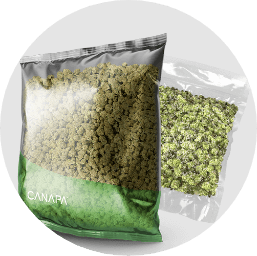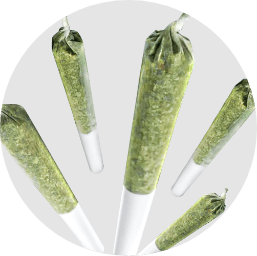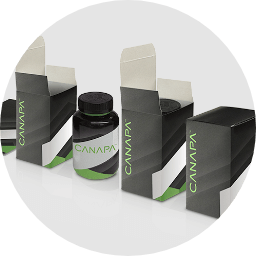Navigating the ever-evolving cannabis industry requires strict adherence to packaging and labeling regulations to ensure consumer safety and legal compliance. This guide covers essential requirements, including child-resistant and tamper-evident packaging, detailed product labeling, and state-specific regulations. Leveraging advanced technology like Paxiom’s NETP-certified machines can help businesses stay compliant and efficient.
- General Packaging Requirements
- Child-Resistant Packaging
- Tamper-Evident Features
- Resealable for Multiple Servings
- Special Considerations for Edible Products
- Labeling Requirements
- Universal Cannabis Symbol
- Detailed Product Information
- State-Specific Regulations
- Variations in State Regulations
- Example: California
- Example: Maryland
- Example: Canada
- Prohibited Elements in Packaging and Labeling
- Prohibitions on Endorsements, Characters, or Imagery Appealing to Minors
- Legal Restrictions Against Health or Physical Benefit Claims
- Weighing Requirements
- What is NTEP Certification?
- Paxiom’s NTEP-Certified Technology
- JuanaRoll and JuanaOne Machines
- Pre-CheQ Analyzer
- PrimoCombi Multi-Head Weigher
- Benefits of NTEP Certification
- Ensure Cannabis Compliance with Paxiom’s Advanced Packaging Solutions
General Packaging Requirements
Child-Resistant Packaging
To prevent unintended access by children, cannabis products must be housed in child-resistant packaging. This packaging is specially designed to be difficult for children under five years of age to open, yet convenient enough for adults to access without undue strain. This requirement is not just a regulatory formality but a crucial safety measure that all cannabis product manufacturers must implement to mitigate the risks of accidental ingestion by minors.
Tamper-Evident Features
Equally important is the inclusion of tamper-evident features in cannabis packaging. These features ensure that once a product has been sealed, any unauthorized access to it can be easily detected. Tamper-evident packaging is essential as it assures consumers that the product has not been altered since the point of manufacture, maintaining product integrity and consumer trust.
Resealable for Multiple Servings
For products containing multiple servings, such as cannabis edibles or tinctures, packaging must not only be child-resistant and tamper-evident, but also resealable. This requirement ensures that the child-resistant and tamper-evident characteristics of the packaging are maintained throughout the product’s use, safeguarding against both accidental exposure and product degradation over time.
Special Considerations for Edible Products
Edible cannabis products pose unique challenges in packaging due to their similarity in appearance and consumption method to non-cannabis food items. To address these challenges, regulations stipulate that packaging for edibles must be opaque. This means the contents cannot be seen from the outside, minimizing the attraction of these products to children and helping to avoid accidental ingestion. The opaque packaging also serves to differentiate edible cannabis products from regular food items, further ensuring safety and compliance.
Labeling Requirements
Universal Cannabis Symbol
One of the fundamental requirements for cannabis product labeling is the inclusion of a universal symbol indicating the presence of cannabis. This symbol must be clearly visible on the primary panel of the product’s label, which is the part most likely to be displayed to consumers at retail. The purpose of this symbol is to alert consumers, especially those unfamiliar with cannabis products, to the presence of cannabis, thus preventing accidental consumption.
Detailed Product Information
Cannabis product labels must include a comprehensive list of information to ensure that consumers are fully informed about the product they are purchasing. This includes:
- Product Ingredients: A complete list of all ingredients in descending order of predominance by weight or volume. This transparency helps consumers make informed choices, particularly those with dietary restrictions or allergies.
- Potential Allergens: For edible cannabis products, it is mandatory to identify any major food allergens present in the product. The label must state “contains” followed by the list of allergens, ensuring consumers with allergies can avoid potentially harmful reactions.
- Nutritional Information: Similar to traditional food products, edible cannabis items must include nutritional information such as the amount of sodium, sugar, carbohydrates, and total fat per serving. This helps consumers manage their dietary intake and make healthier choices.
- Product Identifiers: Labels must feature unique product identifiers like lot numbers and expiration dates. These identifiers are crucial for traceability, quality control, and in the event of a product recall, allowing for efficient identification of specific batches.
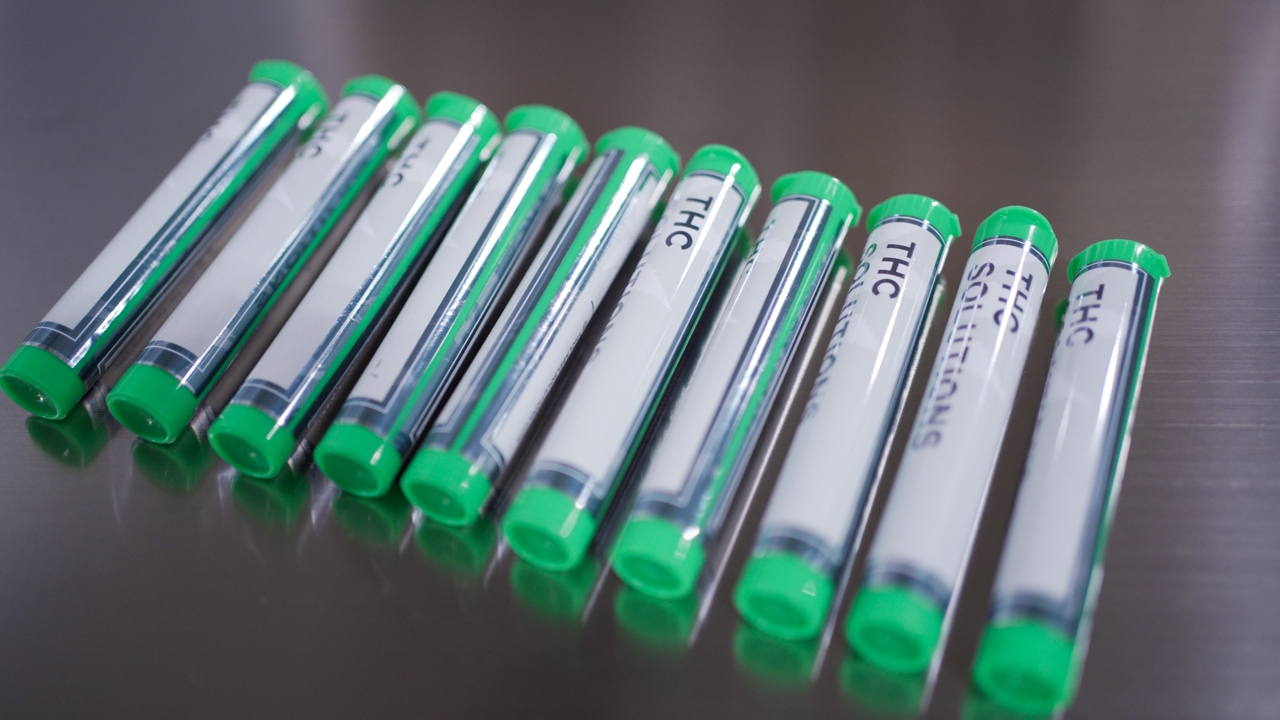
State-Specific Regulations
Variations in State Regulations
The packaging and labeling requirements for cannabis products differ significantly from state to state. These regulations encompass a wide range of criteria, including packaging materials, label content, font size, and additional warnings. Businesses must stay informed about the specific regulations in each state where they operate to maintain compliance and avoid penalties.
Example: California
California has one of the most comprehensive sets of cannabis packaging and labeling regulations. Key requirements include:
- Child-Resistant and Tamper-Evident Packaging: All cannabis products must be in child-resistant and tamper-evident packaging to prevent accidental ingestion by minors and ensure product integrity.
- Primary and Informational Panels: Labels must have two distinct parts—the primary panel and the informational panel. The primary panel is the part of the label most likely to be displayed to consumers and must include the universal cannabis symbol, product identity, and THC content. The informational panel should include ingredients, allergens, nutritional information for edibles, and warnings about the product’s effects.
- Prohibited Label Elements: California regulations strictly prohibit labels from including any elements that might attract individuals under 21 years old. This includes cartoons, images resembling candy, and any false or misleading claims. Additionally, labels cannot suggest that the product offers any health benefits unless verified by scientific evidence.
Example: Maryland
Maryland’s regulations emphasize transparency and consumer safety with specific labeling requirements, including:
- Certificate of Analysis: Maryland’s labels must include a certificate of analysis from an independent testing laboratory. This certificate, accessible via QR code or link, provides detailed information about the product’s composition and contaminant levels.
- Warning Statements: Maryland requires specific warnings on labels, such as “The contents may only be lawfully consumed by a consumer 21 years old or older, or a registered medical cannabis patient,” and updated delayed-effects warnings for edibles.
Example: Canada
Canada also has stringent regulations for cannabis packaging and labeling, which are governed by the Cannabis Act and Cannabis Regulations. Key points include:
- Prohibitions on Packaging and Labeling: The regulations prohibit packaging and labels from being appealing to young persons, using testimonials or endorsements, and making health claims. The goal is to ensure that cannabis products are marketed responsibly and do not mislead consumers.
- Standardized Cannabis Symbols: Similar to the U.S., Canadian labels must feature standardized symbols indicating the presence of cannabis and THC content. This ensures that consumers are aware of what they are purchasing and consuming.
Prohibited Elements in Packaging and Labeling
When it comes to the packaging and labeling of cannabis products, strict regulations are in place to prevent any elements that could mislead consumers or appeal to minors. These prohibitions ensure that cannabis products are marketed responsibly and safely. Here are the key elements that are typically prohibited in cannabis packaging and labeling.
Prohibitions on Endorsements, Characters, or Imagery Appealing to Minors
Cannabis product labels must not include any content that could attract individuals under the age of 21. This includes the use of cartoons, characters, or imagery commonly associated with children’s products. The rationale behind this prohibition is to prevent the accidental consumption of cannabis by minors and to discourage any marketing practices that might make cannabis products seem appealing to younger audiences.
- Cartoons and Characters: Labels must not feature any cartoon characters, mascots, or other imagery that could be perceived as targeting children. This includes any likenesses to characters from popular children’s media or cartoons.
- Candy-like Imagery: Labels must avoid any imagery or branding that imitates candy or other products traditionally marketed to children. This includes bright colors, playful fonts, and any design elements that might resemble popular confectionery packaging.
Legal Restrictions Against Health or Physical Benefit Claims
Cannabis product packaging and labeling must not make any unverified claims about health benefits or physical improvements resulting from the use of the product. Such claims can be misleading and may give consumers false expectations about the effects of cannabis.
- Health Claims: Labels are prohibited from suggesting that the cannabis product can treat, cure, or prevent any diseases or medical conditions unless there is substantial scientific evidence to support these claims and they are approved by regulatory authorities.
- Physical Benefit Claims: Similar restrictions apply to any claims that imply the cannabis product can improve physical performance, enhance well-being, or provide any other physical benefits. These claims must be substantiated by scientific research and regulatory approval to be included on the packaging.
Weighing Requirements
What is NTEP Certification?
The National Type Evaluation Program (NTEP) certification is a mark of accuracy and reliability for weighing and measuring devices used in commerce. Administered by the National Conference on Weights and Measures (NCWM), NTEP certification ensures that equipment meets strict national standards for performance and precision. This certification is particularly important in the cannabis industry, where precise measurements are critical for both regulatory compliance and consumer trust.
Paxiom’s NTEP-Certified Technology
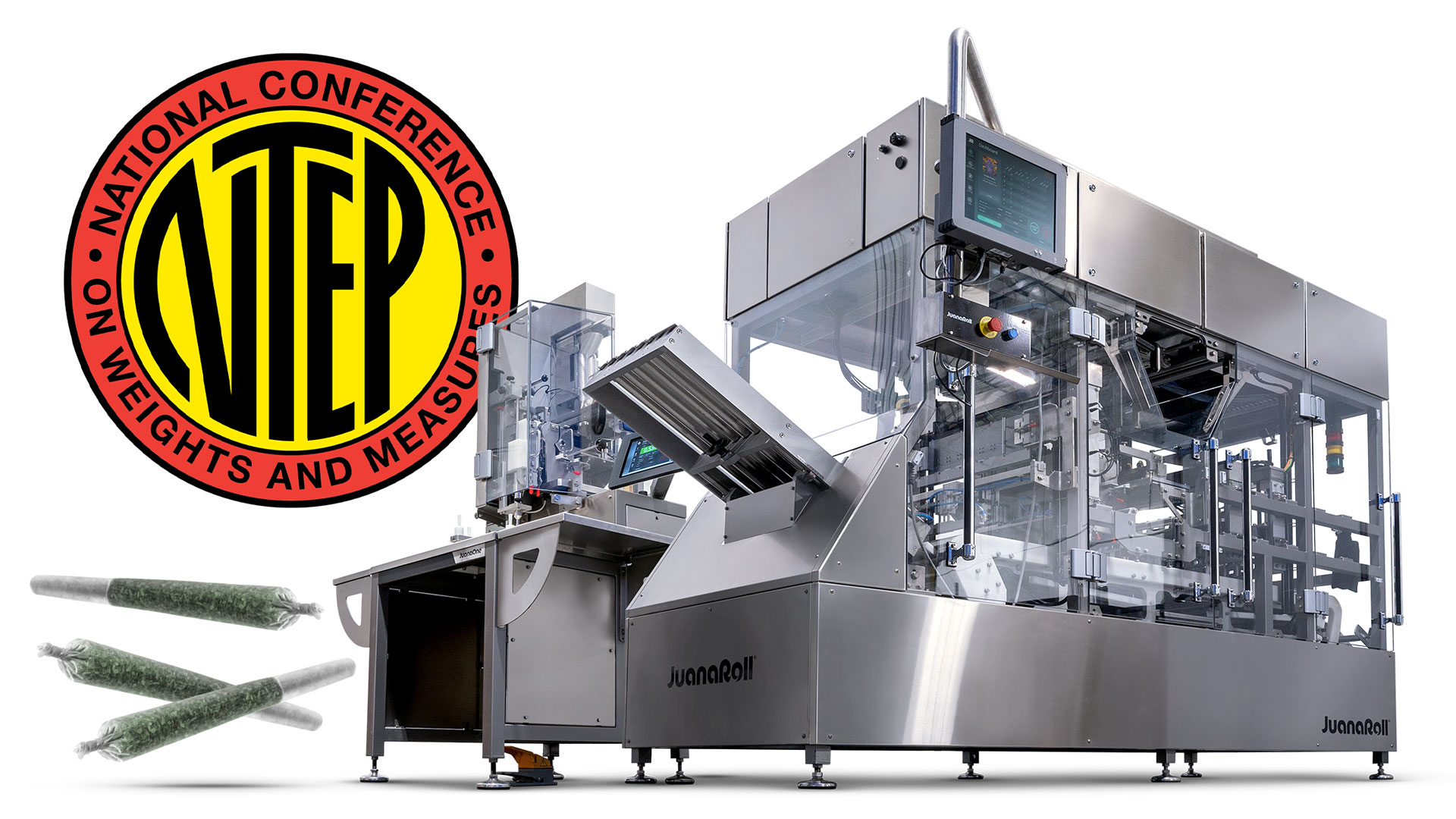 JuanaRoll and JuanaOne Machines
JuanaRoll and JuanaOne Machines
The JuanaRoll and JuanaOne are automatic pre-roll machines manufactured by Weighpack Systems Inc. These machines use advanced electro-magnetic force restoration (EMFR) weigh cell technology, which is known for its high accuracy, measuring to a hundredth of a gram. The JuanaRoll, in particular, is notable for its speed and efficiency, capable of producing up to 4,000 finished joints per hour. The inclusion of a Category 3 Event Logger ensures that all calibrations are logged and tagged to specific operators or inspectors, enhancing traceability and compliance.
Pre-CheQ Analyzer
The Pre-CheQ Analyzer is another NTEP-certified device from Paxiom, designed to weigh products just before packaging. It uses the same precise EMFR technology to ensure that each package meets exact weight specifications. This system is engineered to measure product to an accuracy of 0.001g, providing a critical check to maintain consistency and quality. Products that do not meet the target weight are redirected for reprocessing, ensuring compliance with weight standards.
PrimoCombi Multi-Head Weigher
The PrimoCombi is a high-precision multi-head weighing system also certified by NTEP. This system features a 14-head weigh filling setup, providing accurate and efficient weighing of cannabis products. It includes advanced features such as semi-automatic zero setting mechanisms, stainless steel construction, and real-time reporting capabilities. These features help integrate the weighing process seamlessly into the packaging line, ensuring each package complies with regulatory standards.
Benefits of NTEP Certification
- Accuracy and Consistency: NTEP-certified devices like the JuanaRoll, JuanaOne, Pre-CheQ, and PrimoCombi ensure that cannabis products are weighed accurately, reducing the risk of regulatory non-compliance and ensuring customer satisfaction.
- Traceability: The inclusion of event loggers in these devices allows for detailed tracking of calibrations and adjustments, which is essential for maintaining compliance with state regulations.
- Integration with Digital Tools: These devices often feature capabilities for digital integration, such as real-time data export and connectivity with seed-to-sale software. This integration allows for comprehensive tracking and reporting, which simplifies compliance and audit processes.
Ensure Cannabis Compliance with Paxiom’s Advanced Packaging Solutions
By utilizing NTEP-certified equipment, Paxiom not only meets stringent regulatory requirements, but also sets a high standard for quality and reliability in the cannabis industry. This ensures that their clients can trust in the precision and compliance of their packaging processes, ultimately contributing to the overall integrity and success of their operations.
Stay compliant with Paxiom’s advanced packaging solutions. Contact Paxiom today to learn more.





